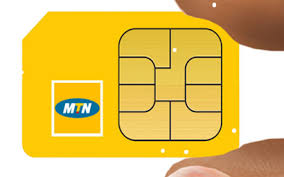
Thanks to the GNOME Shell desktop in Ubuntu 18.04 LTS, it’s now possible to get a single, Windows-style taskbar on Ubuntu. You can make the theme look more like Windows, too, if you’re tired of Ubuntu’s orange theme.
We’re not trying to create a perfect imitation of Windows here—where’s the fun in that? Instead, we’re just looking for an interface that looks and functions more like Windows.
Get a Windows-Style Taskbar
The GNOME Shell desktop supports extensions, which can dramatically change the layout of the desktop and add various other features. You’ll have to install the extensions and a tweaking tool to get started.
First, open a Terminal window. You can do so by clicking “Activities” at the top left corner of the screen, searching for “Terminal,” and then pressing Enter.

Copy and paste the following command into the Terminal, and then press Enter. This installs the GNOME Shell Extensions package, the Dash to Panel extension, the GNOME Tweaks utility, and an icon theme we’ll be using later.
sudo apt install gnome-shell-extensions gnom
You’ll be prompted to type your password and enter “y” to continue.

You’ll have to sign out and back in before GNOME Shell sees your newly installed extensions. To do so, click the system icons at the top right corner of the screen, click your name, and then click the “Log Out” command. Log back in normally.

After logging in, launch the “Tweaks” application. You’ll find it in your Applications menu, and you can also launch it just by searching for “Tweaks” in the menu.

Click the “Extensions” category at the left side of the Tweaks window to view your installed extensions. Enable the “Dash to Panel” extension here.
If you don’t see that extension in the list here, you need to sign out, and then sign back in.

The dock at the left side and the bar at the top of the screen will vanish, and you’ll see a single, Windows-style taskbar at the bottom of your screen.
This panel even has Windows-style live thumbnails when you hover over an application on your title bar and a jumplist-style feature that shows application-specific shortcuts when you right-click an application’s icon.
For example, when you right-click the Firefox icon, you’ll see options like “Open a New Window” and “Open a New Private Window.” Both of these features are integrated into Ubuntu’s default desktop panels as well, but the live window previews normally require clicking an application’s icon on the dock rather than hovering over it.

To configure the Dash to Panel extension, right- click the “Show Applications” button at the bottom left corner of your screen and click “Dash to Panel Settings.”
You’ll find options for moving the panel to the top of your screen, adjusting the size of the panel, controlling the location of the clock, configuring which animations appear, and more.
If you decide you don’t want to use the Dash to Panel extension anymore, open the Tweaks tool, click the “Extensions” category, and turn the extension off.

Choose a Windows-Style Theme
The default Ubuntu theme, named “Ambiance,” is very orange and gray. But you can change this theme if you’d prefer other colors. To change your theme, open the Tweaks application.

Look at the options under the Themes section on the Appearance pane. By default, Ubuntu uses the Ambiance application theme, DMZ- White cursor theme, and Humanity icon theme.
If you want a more blue-and-white theme, try the Adwaita theme. This is the default theme used by the GNOME Shell desktop, which means it’s very polished.
Select the “Adwaita (default)” theme in both the Applications and Icons boxes. You’ll get a much lighter theme that incorporates blue colors instead of orange ones.

If you want a darker theme, select “Adwaita-dark” in the Applications theme box. You’ll get a nice looking dark theme—but one that uses blue accents instead of orange ones.

If you’re still using the standard Ubuntu desktop background, you’ll probably want to change it. To do so, right-click your desktop, and then select the “Change Background” command.
Use the options here to choose one of the included
L background wallpapers, a flat color, or any custom image you want.
You can change the Ubuntu lock screen background from here, too.

Finally, you’ll notice that the panel is still using orange and gray colors. For example, you’ll see these when you click the clock or system status icons at the bottom right corner of your screen.
To change the panel theme, you’ll first need to enable the User Themes extension from the Extensions pane in the Tweaks application. Just click “Extensions” and flip the “User Themes” switch to the “On” position.

You’ll need to download a lighter GNOME Shell theme to install. We tested the Nextik-Theme and thought it looked good. Download the Nextik-Theme.zip file to your computer to get started.
Launch the Tweaks application once again, and then click the “(None)” button to the right of the “Shell” entry in the Themes section. If you don’t see this button after installing the User Themes extension, you need to close and reopen the Tweaks application.
Browse to the Nextik-Theme.zip file you downloaded to install it. After that, click the box to the right of the (None) button, and then select “Nextik-Theme” in the list.

The panel and its popups will now appear light gray and blue, better fitting in with the rest of your desktop.

Enable a Windows-Style Applications Menu
If you don’t like the full-screen application launcher, you can switch to a Start menu-like popup menu instead. To do so, head to Tweaks > Extensions and flip the “Applications Menu” extension to the “On” position.

You’ll see a popup Applications menu whenever you click the “Applications” option on your taskbar. It sorts your applications into different categories so you can launch them more easily.

Even if you don’t want to use a Windows-style desktop, this is a good example of how powerful GNOME Shell’s extensions and themes are. You can use GNOME Shell Extensions, the GNOME Tweaks application, and themes to customize your desktop in many different ways.



![]()



.gif) :a
:a
.gif) :b
:b
.gif) :c
:c
.gif) :d
:d
.gif) :e
:e
.gif) :f
:f
.gif) :g
:g
.gif) :h
:h
.gif) :i
:i
.gif) :j
:j
.gif) :k
:k
.gif) :l
:l
.gif) :m
:m
.gif) :n
:n
.gif) :o
:o
.gif) :p
:p
.gif) :q
:q
.gif) :r
:r
.gif) :s
:s
.gif) :t
:t
No comments:
Post a Comment